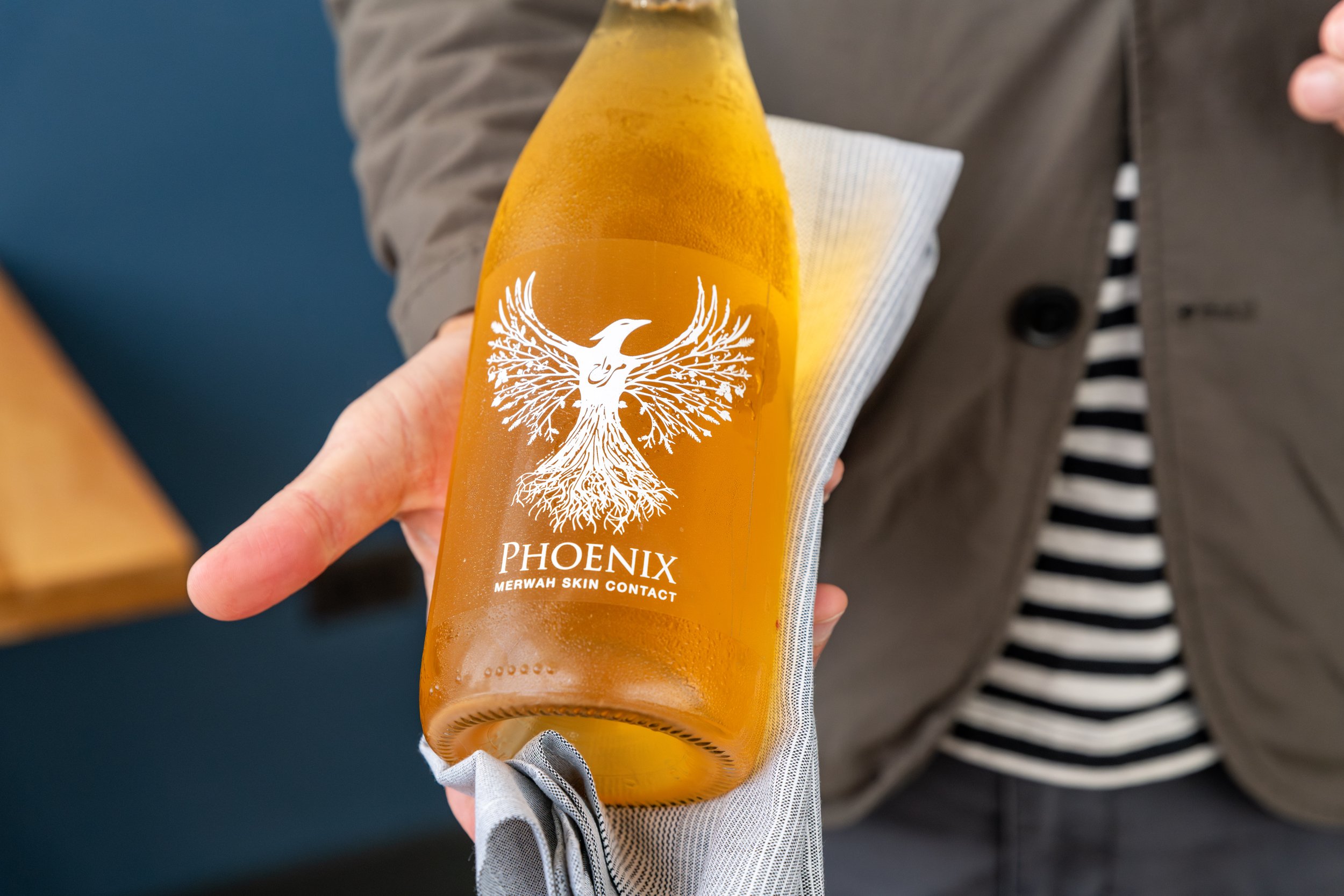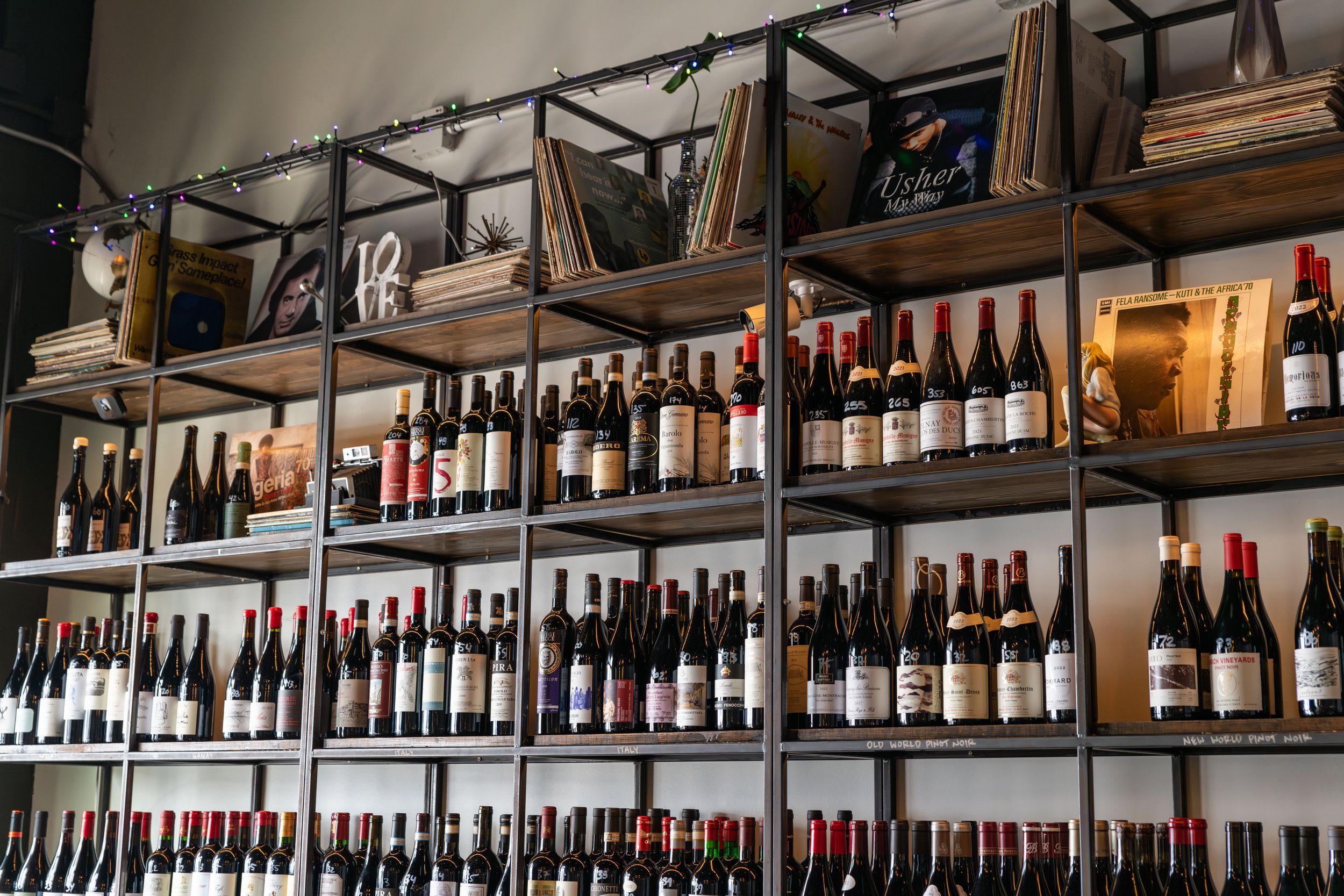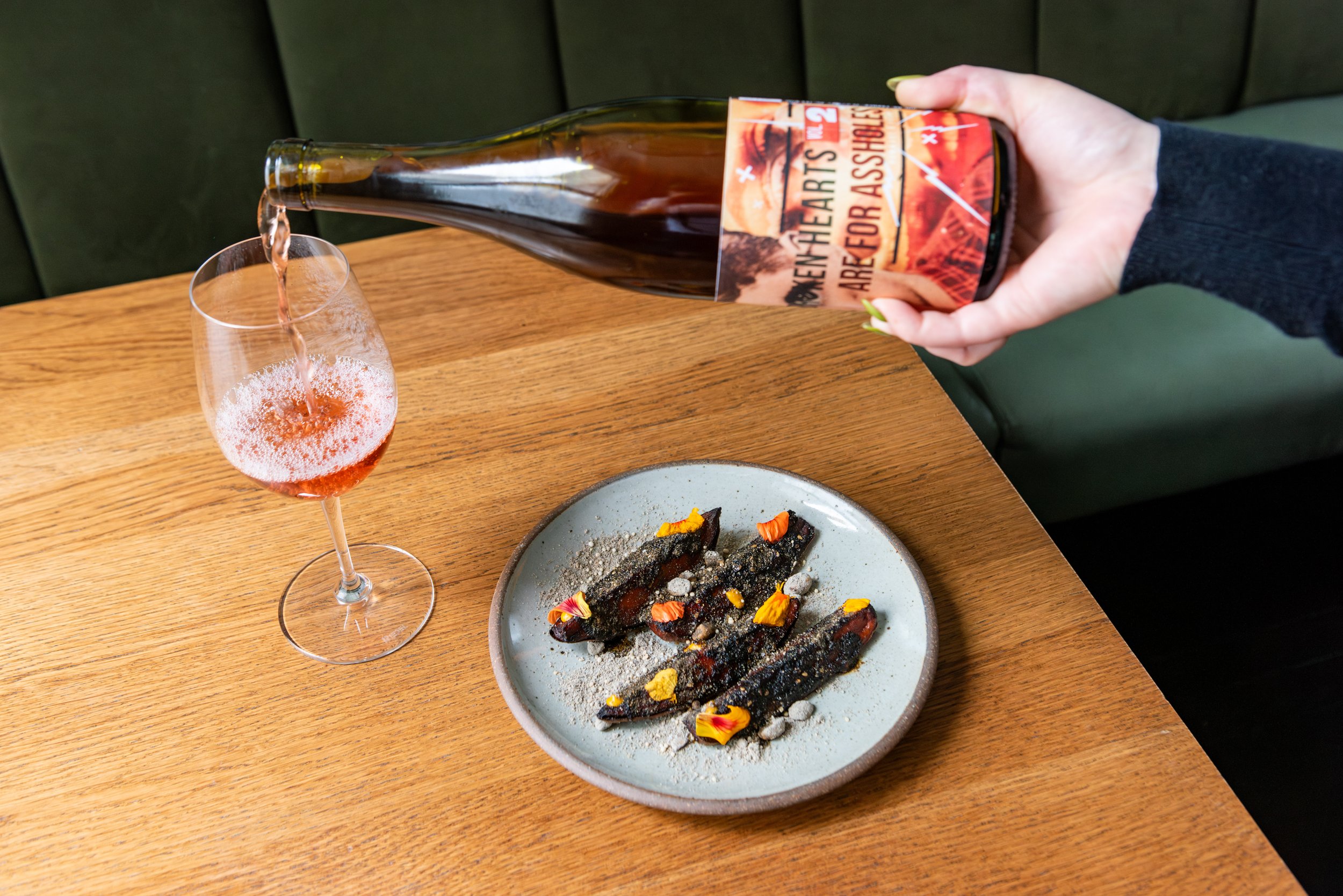Cellars Without Sacrifice
How two Chicago sommeliers have strengthened their programs with focused wine lists
Sémillon, Escala Humana, Credo, Uco Valley, Argentina, 2019 At El Che | photos: alexander zeren
Gone are the days when a wine list needed to be a hefty tome packed with bottles from every region. With the help of savvy importers, in-house education, and creative communication, sommeliers can focus their selections to be more aligned with their restaurants’ food and philosophies.
At Chicago pillars like El Che Steakhouse & Bar and Galit, wine directors Alex Cuper and Scott Stroemer have built lists primarily with South American and Middle Eastern wines, respectively. Though maintaining that focus can be challenging, the reward of showcasing smaller and more obscure regions and winemakers, opening the minds of guests and staff, and building integrity within the restaurants is worth the extra effort.
A guest's first exposure to a restaurant’s wine selection is through its menus, and both Cuper and Stroemer get creative with their presentations. At El Che, Cuper layers in maps and additional notes on sub-regions, climate, history, and grapes, such as, “this category allows us to show support to lesser known growing appellations,“ and, “we treat malbec as other steakhouses treat cabernet sauvignon.” Stroemer also relies on menu annotation for all of his lists. “We can put things on that you wouldn't expect,” he says. His descriptions range from “zippy citrus and clean minerality,” and “supports a school and orphanage in Bethlehem,” to “new to Israeli wine? Start here.”
Merwah, Mersel Wine, Phoenix, Wadi Qannoubine, Lebanon, 2022 AT GALIT
Both restaurants also offer additional literature with a smaller selection of suggested wines. At El Che, there are separate sections on the menu categorized as “Director Selections” and “Wines of Distinction,” giving Cuper the opportunity to gently recommend bottles he’s excited about, and in the case of the BTG list, justify higher price points. At Galit, Stroemer gives guests a list of four suggested pairings that work well with the flow of most meals there. “The opportunity to try as much as you can on a visit is super enticing. It’s stuff that's not going to be open BTG, and it's a perfect amount for two people.”
The next step is making the sales, which starts with staff education. At El Che and Galit, staff wine classes cover many bases. “There’s no book, so it’s a lot of tasting, looking at maps. It’s a lot of piecing together the story,” says Stroemer. “It's a direct ROI situation, you see the sales of whatever they talk about skyrocket,” says Cuper. “And [guests] know this is a special program.” At Galit, staff members can also purchase bottles at cost, giving them a more accessible way to train their palates. “There's nothing more powerful tableside than a server saying ‘I just had x,’” says Stroemer. “We keep all of their purchases logged in Slack so we can go back and say, ok you've tried this, now try this.” As an added educational layer for staff and guests alike, El Che and Galit also host regular wine dinners, bringing in winemakers to showcase their wine and host discussions and tastings. “It’s something cool and different to offer these people a platform to show their stuff,” says Cuper.
Beyond the four walls of the restaurant, focusing the menus also helps the makers and movers. “Over the last couple of years, the amount of things that have become available to us has grown,” says Stroemer. “People respect what we do and want to put their wine in front of us.” “We are the only people in the midwest, and sometimes the country, that has a lot of this stuff,” says Cuper, whose South American wine list has become the most extensive in the country. The specialization also benefits the importers and distributors. “We work with Cream,” says Stroemer. “They help us bring in a lot of the more esoteric bottles, which works for them too—if something works well here, they can sell it elsewhere.”








